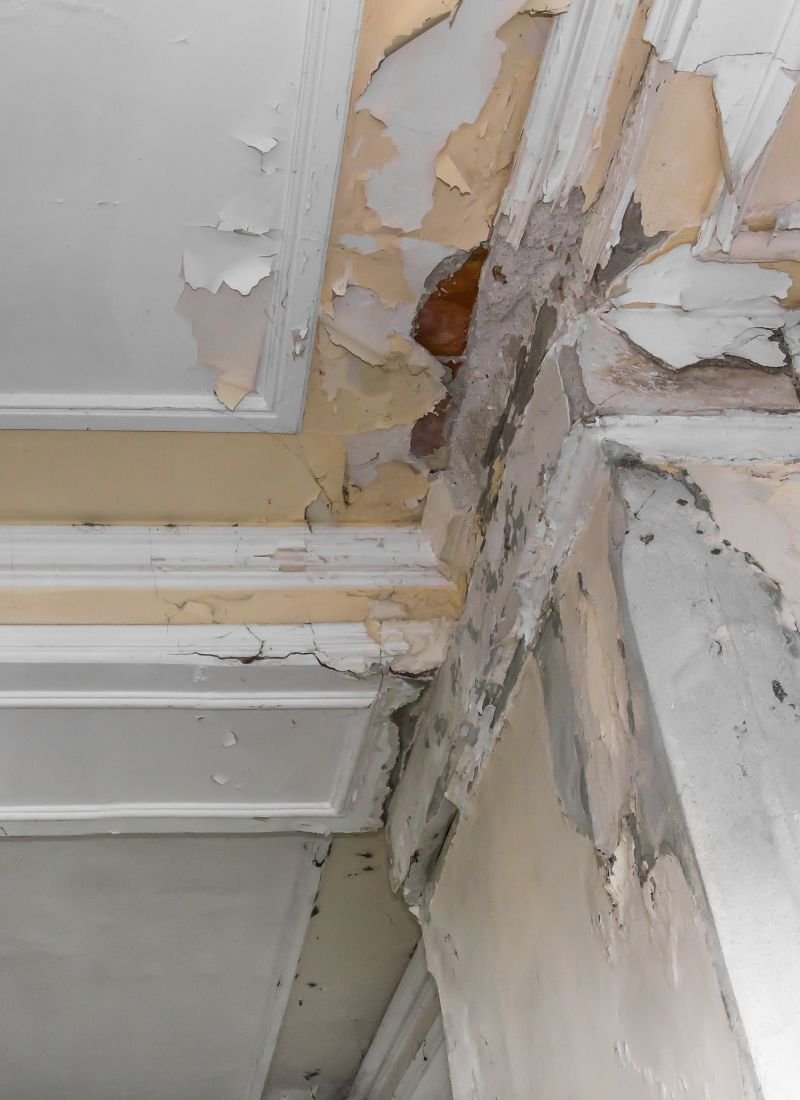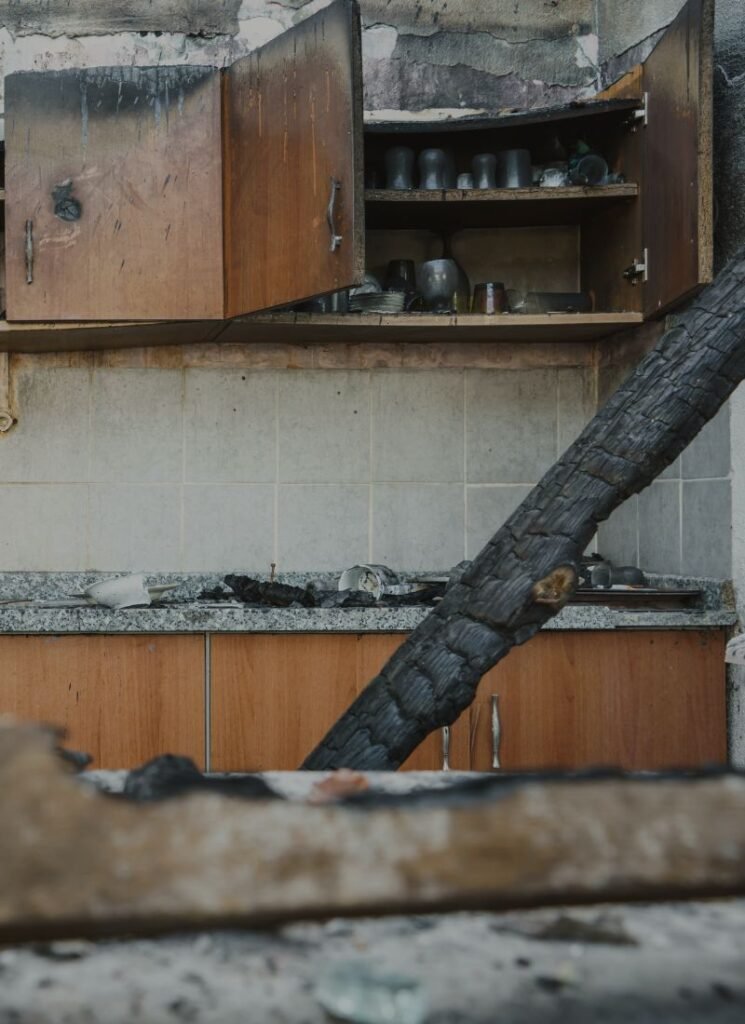When dealing with a mold issue in your home or business, understanding the different types of mold and their unique characteristics can be instrumental. An expert restoration team can assist you in identifying these molds, and employing the right mold remediation process tailored to each type. Below we delve into some common mold types and where you might find them.
“There is nothing more valuable than health; it’s the foundation upon which all other aspects of life flourish.”
—— Unknown
What Are the Different Types of Mold?
If you suspect the presence of mold in your space, it’s crucial not to delay seeking help. Look for reputable mold remediation services or search for a reliable mold remediation company near me for swift, local assistance. A mold remediation company like ours offers a free estimate and specializes in mold odor removal and comprehensive cleanup, ensuring a healthier environment for all.
Remember, addressing mold issues promptly with the help of a mold remediation specialist can save you time, money, and potential health problems down the road. Always prioritize safety and expert assistance when facing mold challenges.
Alternaria:
- Overview: Alternaria is a common mold type that can be found both indoors and outdoors. It’s one of the most widespread molds and is well-known as a primary cause of allergic reactions in many individuals.
- Materials:
- Habitat: Inside homes, Alternaria often establishes itself in areas exposed to moisture, such as showers, bathtubs, beneath leaky sinks, and around windows where condensation builds up.
- Food Sources: This mold is often associated with textiles, plants, and various organic materials. It can also be found on numerous substrates outdoors, from soil and plants to decaying wood.
- Conditions:
- Moisture: Alternaria thrives in damp environments. Its growth is often triggered by a buildup of moisture, making it crucial to address any water leaks or dampness promptly.
- Temperature: It can grow over a broad range of temperatures but prefers warmer conditions.
- Health and Risks:
- Allergenic Properties: Alternaria is a primary source of airborne mold spores and can instigate allergic reactions, which might include sneezing, runny nose, and itchy eyes.
- Health Symptoms: Exposure to high levels of Alternaria, especially in enclosed spaces, can exacerbate asthma symptoms and lead to respiratory complications.
Aspergillus:
- Overview: Aspergillus is a ubiquitous mold type, with its spores present in various environments. Several species fall under the Aspergillus category, and while many of them are harmless, some can lead to health issues, especially in immunocompromised individuals.
- Materials:
- Habitat: Inside homes, Aspergillus is often found in areas that frequently experience higher levels of moisture. This includes air conditioning systems, insulation, or even on foods left in damp conditions.
- Food Sources: It can grow on a variety of substrates including soil, compost, stored grains, and rotting vegetation. Indoors, it thrives on walls, wallpapers, and organic materials, especially when damp.
- Conditions:
- Moisture: This mold type prefers areas with consistent dampness or high humidity, such as basements, attics, and bathrooms.
- Temperature: Aspergillus favors warmer climates but is versatile enough to grow in a range of temperatures.
- Health and Risks:
- Allergenic Properties: Exposure to Aspergillus can cause allergic reactions in some people, leading to symptoms like coughing, wheezing, and skin rashes.
- Health Symptoms: In more severe cases, especially for those with weakened immune systems, certain species of Aspergillus can cause a condition known as aspergillosis. This can range from allergic responses to more serious lung infections.
- Aflatoxin Production: Some species, particularly Aspergillus flavus, can produce a toxic substance known as aflatoxin, which is carcinogenic and can be found on contaminated food crops.
Cladosporium:
- Overview: Cladosporium is one of the most common molds found worldwide. Recognizable by its olive-green to brown or black colonies, it’s frequently found both indoors and outdoors and can grow in both warm and cold conditions.
- Materials:
- Habitat: Inside homes, Cladosporium often grows on surfaces like walls, cabinets, carpets, and upholstery, especially if they’ve been exposed to moisture.
- Food Sources: This mold commonly thrives on organic materials such as plants. Indoors, it can be found on textiles, wood, and even inorganic materials when there’s enough dirt, dust, or organic debris.
- Conditions:
- Moisture: While it can endure a variety of conditions, Cladosporium particularly favors areas with persistent dampness, such as bathrooms, basements, and under sinks.
- Temperature: It grows in both warm and cool environments, making it a versatile mold type. This adaptability allows it to colonize a wide range of areas in homes.
- Health and Risks:
- Allergenic Properties: Cladosporium is known to produce allergenic responses in sensitive individuals. Common reactions include respiratory issues, hay fever-like symptoms, and skin rashes.
- Health Symptoms: Some people may experience sore throat, watery eyes, coughing, and sinusitis after exposure.
- Chronic Exposure: As with many molds, prolonged exposure can exacerbate health problems, especially in individuals with asthma, allergies, or compromised immune systems.
Penicillium:
- Overview: Penicillium is a widespread mold known not only for its blue-green color and velvety texture but also for its importance in the medical field, being the source of the antibiotic penicillin. It’s commonly found in various environments and can thrive indoors under the right conditions.
- Materials:
- Habitat: Inside homes, Penicillium often appears on materials that have been damaged by water or have high humidity. It can be found on wallpaper, mattresses, carpets, and decaying fabrics.
- Food Sources: This mold enjoys organic materials, and it’s not uncommon to find it on foods such as fruits, bread, cheese, and other perishables.
- Conditions:
- Moisture: Penicillium prefers environments with high humidity levels. Areas that are not well-ventilated or have persistent dampness can quickly become breeding grounds.
- Temperature: It thrives in cooler temperatures, which is why it’s often found in basements and kitchens, especially near refrigerated areas.
- Health and Risks:
- Allergenic Properties: Penicillium is known to be an allergen. Exposure can lead to symptoms such as coughing, shortness of breath, chest pain, and sinusitis.
- Health Symptoms: Beyond respiratory problems, it can also lead to skin reactions in some individuals.
- Chronic Exposure: Over time, continuous exposure can escalate health symptoms and might exacerbate issues for those with weakened immune systems or pre-existing conditions.
Stachybotrys Chartarum: (BLACK MOLD)
- Overview: Stachybotrys Chartarum, often referred to as “black mold” or “toxic mold”, is infamous for its dark greenish-black appearance and potential health risks. It’s known for producing mycotoxins that can lead to various health issues.
- Materials:
- Habitat: In households, Stachybotrys Chartarum is typically found in damp, water-damaged areas, especially where the moisture problem has been ongoing for a while.
- Food Sources: This mold thrives on materials with high cellulose content such as wood, fiberboard, gypsum board, paper, dust, and lint. Wet or damp materials are particularly susceptible.
- Conditions:
- Moisture: Stachybotrys Chartarum requires prolonged moisture exposure to grow. This mold type is not typically found in just “damp” conditions; it’s more likely where materials have been soaked or water-damaged for a long period.
- Temperature: It prefers a relatively warm environment, typical of indoor temperatures.
- Health and Risks:
- Mycotoxins: This mold releases mycotoxins that can be harmful when inhaled or, in some cases, when coming into contact with the skin.
- Health Symptoms: Exposure can lead to symptoms like persistent coughing, sneezing, irritation to the eyes, mucus membranes of the mouth and nose, rashes, persistent headaches, and fatigue.
- Long-term Exposure: Prolonged exposure to the mold, especially in closed environments, can lead to more severe health issues, especially in those with pre-existing health conditions or weakened immune systems.
Fusarium:
- Overview: Fusarium is a widespread mold commonly found in soil and on plants. While some species play crucial roles in the ecosystem, certain strains can produce mycotoxins that are harmful to both plants and humans.
- Materials:
- Habitat: In households, Fusarium is usually discovered on water-damaged carpeting and wallpapers.
- Food Sources: This mold type can feed on various organic materials, particularly those found in homes. Common materials include plants, textiles, wallpaper glue, and any material that’s damp and contains cellulose.
- Conditions:
- Moisture: Fusarium’s growth is spurred in wet conditions, making areas with water damage or consistent dampness more susceptible to its colonization.
- Temperature: Fusarium can grow at cooler temperatures compared to many other molds. This allows it to thrive in colder environments, such as water-damaged carpets and wallpapers even in less-heated rooms.
- Health and Risks:
- Mycotoxins: Fusarium produces mycotoxins, which are harmful when ingested, inhaled, or come into contact with the skin. They can cause a range of health issues from allergic reactions to more severe conditions, especially in immunocompromised individuals.
- Infections: In rare cases, Fusarium can lead to infections, especially in people with weakened immune systems.
- Allergic Reactions: Symptoms can include sneezing, itchy eyes, skin rashes, and sinusitis.
Trichoderma:
- Overview: Trichoderma molds are commonly found in indoor environments, especially in homes. They are typically fast-growing molds that appear as white or green wool-like clusters. While certain species of Trichoderma are used beneficially in agriculture for their ability to antagonize other fungi, when present indoors, they can be a cause for concern.
- Materials:
- Habitat: Trichoderma thrives in damp environments. This mold often colonizes building materials like wood, wallpaper, carpet, and other household surfaces. They are especially common on surfaces that remain consistently damp, like continuously leaky pipes or areas that have faced water damage.
- Food Sources: They consume organic matter, which means they can consume many materials found in homes, like wood or textiles.
- Conditions:
- Moisture: Trichoderma molds require high moisture to thrive. Areas that have faced flooding, have persistent leaks, or have poor ventilation are prime targets for Trichoderma colonization.
- Temperature: They thrive in typical indoor temperatures and do not require extreme conditions to grow.
- Health and Risks:
- Trichoderma releases enzymes that can break down wood and other materials, potentially leading to structural damage.
- Certain species of Trichoderma can produce mycotoxins, which can pose health risks, especially for people with weakened immune systems, lung conditions, or allergies.
- Inhalation or exposure can lead to allergic reactions in some people, manifesting as respiratory issues, sneezing, or skin rashes.



It’s crucial to note that while molds can be found anywhere, they particularly thrive in environments with high humidity, warmth, and darkness. Regular inspections and proper ventilation can help prevent their growth. If mold is detected, contacting a mold remediation specialist ensures safe and effective removal.





